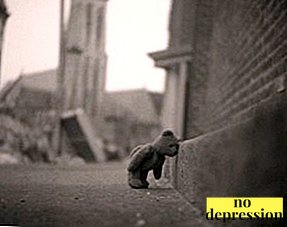Communication is a complex process that consists of three parties.
When considering the problem of communication in psychology, special attention is paid to its interactive side. Similar aspect of communication performs a number of important functions.
Concept and characteristics: briefly

What does the term "interactive side of communication" mean?
Interactive communication - joint activity of individuals, in the process of which not only information is exchanged, but also the realization of joint goals.
During this interaction, people not only enter into conversations with the help of speech, but also perform joint actions and acts.
During the interaction, the mutual influence of all its participants on each other, as a result activity becomes as efficient as possible because of the emergence of common views, goals.
Subjects of interaction make efforts to achieve a specific result in which they are interested.
The interactive side of communication allows you not only to achieve goals as a result of joining forces with other people, but also to develop your own personality.
During such communication, a person is aware of his actions and desires, develops new qualities. Often these qualities are borrowed from other people.monitored during joint activities.
Forms and examples
Usually emit three forms of interaction:
- Positive (cooperation, consent, adaptation, association). In the first case, it is expressed in the organization of joint activities aimed at achieving the desired result for all participants in the process. With cooperation, a number of people are united in a common group to achieve a single goal. Consent means that the person expresses his approval of the position of the majority, while not necessarily participating in an active activity. Adaptation means that the person adapts to the proposed circumstances. Association - the existence of a close relationship between participants in the process, which are similar to each other.
- Competitive (competition, rivalry). Here the competitive moment comes first.
With competition, there is a clash of interests of the subjects who simultaneously claim the same benefits or achievements. Moreover, this social process is both positive and negative.
On the one hand, the participants in the competition try to exert maximum efforts, improve their skills, and develop effective strategies. On the other hand, they are constantly in a state of emotional stress and may resort to forbidden methods in order to get what they want.
 Rivalry implies a desire to prevail over an equal opponent. It can manifest itself openly or hidden. The rivals are in a state of active struggle for power, prestige, realization, recognition, etc. They realize that one will be the winner and the other will be the loser, which will encourage them to defend their own interests.
Rivalry implies a desire to prevail over an equal opponent. It can manifest itself openly or hidden. The rivals are in a state of active struggle for power, prestige, realization, recognition, etc. They realize that one will be the winner and the other will be the loser, which will encourage them to defend their own interests. - Negative (conflict, opposition, dissociation). What is? During joint activities there are serious obstacles to effective interaction.
Conflict is the most negative option of interactive interaction, in which serious disagreements and disputes arise between the participants.
Opposition is a manifestation of a negative reaction to a proposed action, behavior pattern or strategy. Dissociation refers to the mental process in which a person protects himself from an unpleasant situation with the help of removal from it. He imagines that everything that happens has something to do with someone else and not with him.

Positive Interaction observed during any effective joint activity. It can be a learning process, work on projects, holding mass cultural events, joint leisure and much more.

For example, a positive interaction can be called a situation when, during a community work day, the collective of an organization jointly arranges the territory in front of its building.
Another example is the joint actions of children cleaning the apartment for the arrival of the mother.
Controversial form interaction is typical for business and professional activities.
It is here that happens. clash of key interests of peoplewho seek to achieve career success, realize ambitions, ensure their material well-being.
Employees who hold one position in a company can compete with each other during the execution of projects, as each will seek to attract the attention of the authorities.
Negative interaction causes significant damage to the emotional state of its participants, reduces the effectiveness of their joint activities.
Being in a state of non-acceptance of each other can not join forces to achieve the goal.
So, the conflict between the spouses, arising from the selection of new furniture for the apartment, will lead to a loss of time, the appearance of irritation on both sides, unwillingness to make efforts to find a compromise.
The manifestation of the interactive aspect of communication

Aspect manifests itself in the presence of the following joint performance characteristics:
- common goal;
- common motives;
- common space in which the participants of the interaction function;
- set time for the implementation of tasks;
- coordination of the actions of the participants;
- the presence of patterns of interpersonal interaction;
- transmission of information.
Similar characteristics peculiar to all forms of interactive communication. But with a positive form, the unity of motives and goals leads to cooperation of efforts and obtaining a joint desired result.
With adversarial and negative forms, the goals and motives of the participants in the interaction can be combined, but the pooling of efforts will not take place due to opposition of interests, attitudes, strategies.
Function

This function is associated with development of strategy, the principle of interaction of people.
As a result, organized joint activities aimed at obtaining a result.
Opponents have the opportunity to build communication, to establish cooperation and in the end achieve common goals. Interaction allows the parties to exchange information, to perform specific actions.
Similar communication function has both social and psychological value. From a social point of view, the relations between members of society are being adjusted.
People perform social roles that correspond to their position, and as a result achieve their goals.
Psychological significance is manifested in the mutual influence of individuals on each other, in the development during joint activities of new skills and character traits, in the establishment of interpersonal relations.
What does it depend on?

This is a component of communication, reflecting the direct interaction.
Similar interaction always leads to some result.
Moreover, the result can be both positive and negative.
This side of communication is largely depends on those social rolesthat are imposed on a person by society. Thus, a young woman can be at the same time a mother, wife, boss, daughter, friend, etc.
Every social role requires her to fulfill obligations that imply these roles. So, as mothers children she attends parent meetings, matinees and activities that take place in school and kindergarten.
She cooperates with other parents to solve various organizational issues. As wives she performs household duties, solves domestic problems with her husband, interacts with his parents.
Role the head imposes on her obligations to build relationships with subordinates, coordinate the activities of the team, develop an effective work strategy, etc.
Conformity of behavior with social expectations is confirmed by numerous interactive interactions, during which the individual performs the expected actions from him.
If, during communication, a person demonstrates unacceptable behavior from a social point of view, interaction with others is complicated.
Interaction and interaction

Interaction - the actions of people directed at each other.
Individuals come into contact, because they are dependent and cannot independently exist in society.
It is precisely because a person is being socialhe cannot realize himself without interacting with other people.
In the process of communication, experience is exchanged, information is received, skills are developed, self-improvement, rethinking of beliefs, etc.
Some people need more contact with others, others less. But it is impossible to completely disengage from joint activities with other people.
Interaction during communication can be different:
- friendly;
- neutral;
- hostile.
Taking into account the different positions held by the parties, the dialogue for each of them can be based on one of the principles: domination, equality, subordination.
Interaction - interaction of people during communication, their planning of joint activities and psychological impact on each other. Any interaction is a process of mutual influence.

If subject A communicates with subject B, between them a certain connection is established.
They not only provide each other with information, but also plan further joint activities, they change as a result of communication.
Anyone we interact with has an impact on our personality. And we, in turn, influence it.
Similar influence can be carried out not only on interpersonal, but also at group level. In this case, a dialogue is established between social groups that influence each other.
So, the interactive side of communication plays an important role in building social relationships between the subjects of public life. There are three key forms of interaction that manifest themselves in various social processes.
Interactive side of communication:

 Rivalry implies a desire to prevail over an equal opponent. It can manifest itself openly or hidden. The rivals are in a state of active struggle for power, prestige, realization, recognition, etc. They realize that one will be the winner and the other will be the loser, which will encourage them to defend their own interests.
Rivalry implies a desire to prevail over an equal opponent. It can manifest itself openly or hidden. The rivals are in a state of active struggle for power, prestige, realization, recognition, etc. They realize that one will be the winner and the other will be the loser, which will encourage them to defend their own interests.

